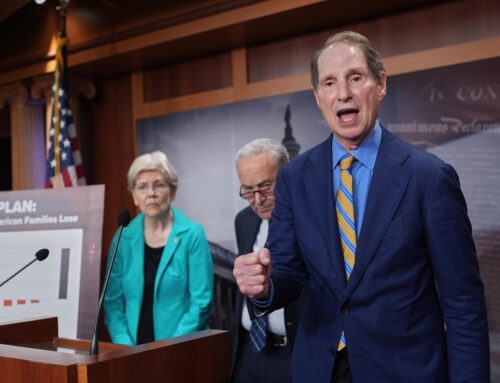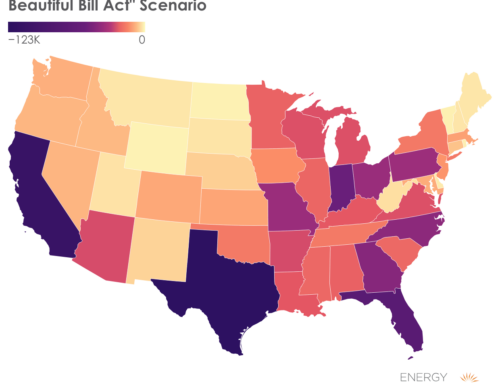Bear Market Risk: Are Stocks Due For A Fall?
January 5, 2025
After examining stocks’ superior performance over the last two years, an analysis suggests that the returns were reasonable given the companies’ improved profitability, particularly for technology stocks. The more challenging question is whether the enhanced profitability can continue in 2025 or if expectations have become too high. Looking at the long-term returns on stocks and earnings data can provide additional insights.
In the short run, the market is a voting machine, but in the long run, it is a weighing machine. – Attributed to Benjamin Graham
While the S&P 500 had a robust total return of 25% in 2024, looking at longer-term annualized returns can help indicate if stocks might be at risk of mean reversion after significant outperformance. Using a 10-year annualized performance, stocks had a 13% return through 2024 versus a long-term annualized performance since 1928 of 9.9%.
Because the most important goal of investing is growing purchasing power, it is instructive to consider real, after-inflation, stock returns. Using a 10-year annualized performance, stocks had a 9.7% real return through 2024 versus a long-term annualized performance of 6.7% since 1928. Both these measures point to increased mean-reversion risk.
If a business does well, the stock eventually follows. – Warren Buffett
Earnings can be a strong predictor of long-term stock performance because, as Warren Buffett says, “The value of a business is the cash it’s going to produce in the future, discounted back to the present.” While earnings and stock prices can diverge in the short term, the long-term path is the same. Notably, the S&P 500 has grown earnings beyond inflation, underscoring the long-term purchasing power and wealth generated by the ownership of operating companies via stocks.
Since 1936, S&P 500 nominal earnings have grown at a 6.7% annualized pace and outpaced inflation at a 3% annualized rate. Interestingly, the above-average stock returns of the last ten years were accompanied by above-average nominal and real earnings growth. The post-COVID earnings growth was stellar and well above average on a real basis despite elevated inflation levels. S&P 500 earnings are expected to increase by over 12% in 2025 after 9% growth in 2024. The durability of the improved profit profile of stocks is critical to whether stocks can avoid a reversion to historical return levels.
In the short run, the market is a voting machine, but in the long run, it is a weighing machine. – Attributed to Benjamin Graham
Investing in stocks demands a long-term investment horizon, no matter the valuation levels or circumstances. Stocks have been higher 73% of the time in any given calendar year, but that hit rate improves to 94% with a ten-year holding period. Using the total return on the 10-year U.S. Treasury Note, bonds have been higher 79% of the time in any calendar year, but perfect with a ten-year holding period.
Notably, the situation gets more interesting when considering after-inflation returns. The positive hit rate for stocks dominates bonds for the one-year holding period and shines over ten years. To be clear, the short-term drawdowns for stocks are typically much more severe for stocks relative to bonds, so the positive hit rate doesn’t tell the whole story. Investors with a short-term liability should stick with bonds or cash. However, using the hit rate and worst ten-year real return, the data suggests that stocks are less risky to your wealth with a ten-year time horizon than bonds!
If you’re not willing to react with equanimity to a market price decline of 50% two or three times a century, you’re not fit to be a common shareholder, and you deserve the mediocre results you’re going to get. – Charlie Munger
The S&P 500 has had an annualized total return of 13% over the last ten years, well below the highest ten-year annualized return recorded of 20.1%, set in 1958. On a real return basis, the ten-year average sits at 9.7%, below the all-time high of 17.9%, also reached in 1958.
As the late, great Charlie Munger notes in the quote above, the worst annual return for stocks understates the short-term downside pain that has historically been experienced. For example, the S&P 500 fell by 49% when the technology bubble popped from 2000 to 2002. The global financial crisis (GFC) provides a worse example, with stocks declining by 57% from late 2007 through early 2009. Despite all these ugly and unpleasant shocks, stocks have provided the highest nominal and after-inflation annualized return of any asset class over the long term.
Another measure of short-term risk is the intra-year decline of stocks, which has averaged 14.6% over the last 53 years. The previous two years have sported below-average drawdowns during the year, so investors should be braced for a return to normal. However, history shows these lower-volatility markets can persist for longer than two years.
While the perma-bears who believe stocks are in a bubble do not appreciate the improved profitability of stocks driven primarily by the technology sector, stocks do have an increased risk profile based on recent above-average returns, elevated valuations, and the expectation of a benign economic outcome. However, history shows that stocks can continue to rise even after the recent robust returns, and profitability can continue to be exceptional, so betting on a decline is no sure thing.
Investors should revisit their risk tolerance since the growth in stocks has almost certainly significantly increased their allocation to risk assets relative to even two years ago. The evergreen advice of rebalancing stock and bond allocations toward the target risk level would be wise for most investors. As the earlier quote from Charlie Munger states, investors panicking during the inevitable large drawdowns in stocks are doomed to “mediocre results.” Keeping enough investments in more stable or income-producing assets via rebalancing can provide the ballast to ride out the rough seas that hit stocks at unpredictable times.
Search
RECENT PRESS RELEASES
Related Post




